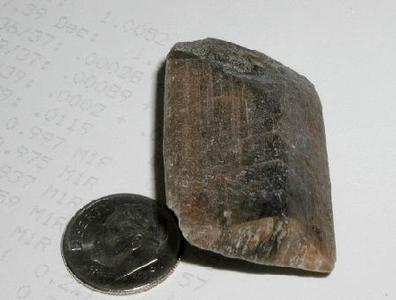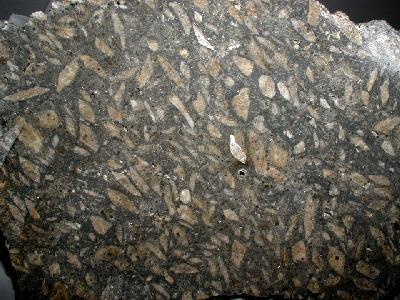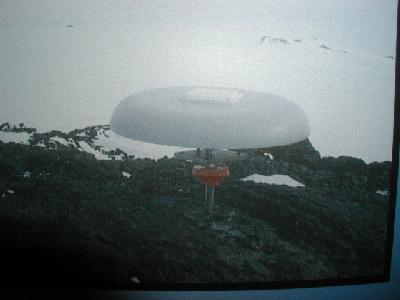22 August, 2001
Emily Desmerais is an undergraduate student studying geology and math at New
Mexico Tech. She will be the first undergraduate student to accompany Dr.
Philip Kyle on a trip to Mt. Erebus. She spoke with me about the Global
Positioning Systems (GPS) that will be used to measure ground movement in a
wide area around the volcano. The technique used to gain a wide array of
data is called “campaigning.” This means that Emily, Dr. Kyle, (and
hopefully myself, at some point) will need to fly to several different
locations, set up the system, leave it recording for three days and then
pick it up for the next stop on the campaign trail. The monitors are
extremely sensitive, and can measure ground movement in units as small as
millimeters.
Although rock dating is not included in this field trip, it has been a key
component of other forays on Mt. Erebus, and the man responsible for doing
the tests is Richard Esser. He will be joining the team as a power
technician. He took the time to show me several labs here at New Mexico
Tech, foremost of which is the Potassium/Argon lab, which essentially
measures the ratio of Argon 40 to Argon 39. A detailed description of how
this is done would not be appropriate here, but if you’d like a thumbnail
sketch of the process, feel free to e-mail me.
Finally, a word about the features of the ubiquitous anorthoclase phonolite
found on Mt. Erebus. Anorthoclase feldspar has a crystal structure that is
pictured below. These crystals form within the phonolite, which was named
because the first researchers to strike it with a rock hammer noted a
ringing sound—hence the prefix “phon.” The crystals form in the magma
chamber, emit during an eruption, then as the phonolite weathers away they
are exposed. The veterans tell me they are everywhere around the crater
rim.
_________________________________________________________________
Get your FREE download of MSN Explorer at http://explorer.msn.com/intl.asp

This is a crystal of anorthoclase feldspar. Its shape is described as rhomboidal (lacking right angles). _________________________________________________________________ Get your FREE download of MSN Explorer at http://explorer.msn.com/intl.asp

This is a cut section of anorthoclase phonolite. You can see the lighter colored feldspar crystals in cross-section, imbedded in the phonolite. _________________________________________________________________ Get your FREE download of MSN Explorer at http://explorer.msn.com/intl.asp

This is a picture of a GPS unit similar to the ones that will deployed during this field season. _________________________________________________________________ Get your FREE download of MSN Explorer at http://explorer.msn.com/intl.asp
Contact the TEA in the field at
.
If you cannot connect through your browser, copy the
TEA's e-mail address in the "To:" line of
your favorite e-mail package.
|
